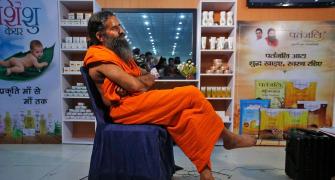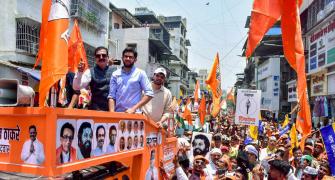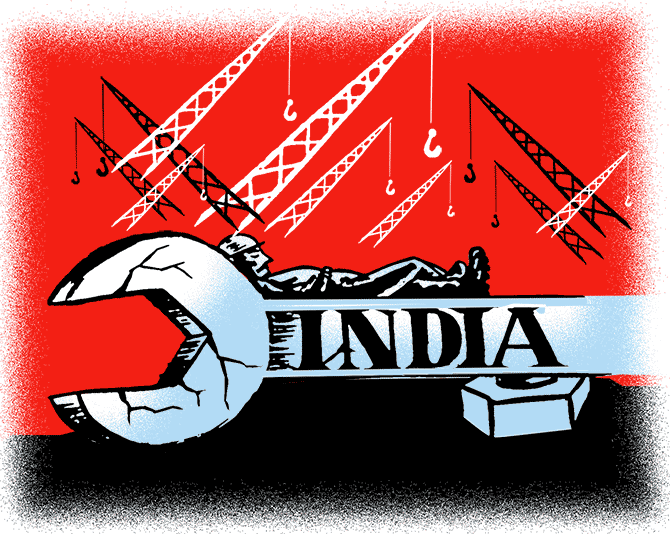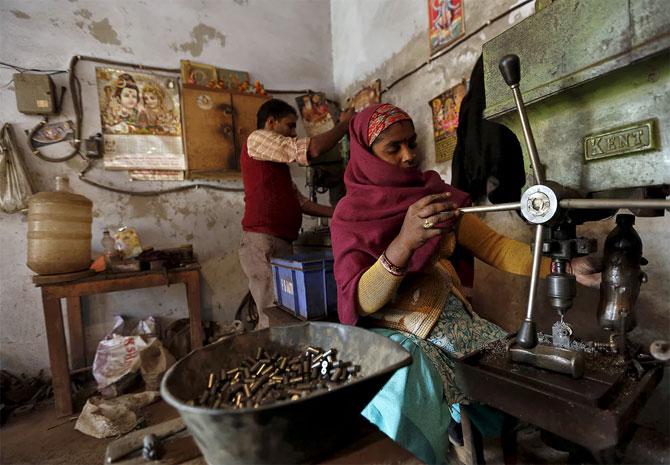'It is a shame that the female work participation rate is still abysmally low.
'But it is worse that statistical contortions do not help us understand the problem adequately,' says Mahesh Vyas.
Illustration: Uttam Ghosh/Rediff.com

The International Conference of Labour Statisticians (ICLS) organised by the International Labour Organisation in October 2013 redefined work and employment for the purpose of statistical measurement.
In doing so, it seems to have recognised a lot better the new applications of labour statistics compared to the times when these were largely inputs in measuring national accounts.
The big conceptual break in the 19th ICLS is a recognition that the earlier segmentation of labour into three statuses -- employed, unemployed and inactive -- was grossly inadequate.
Effectively, such segmentation rendered all women who worked at home to bring up children, take care of the old, cook for the family, do the dishes and the laundry, clean-up, and undertake other domestic work were all classified as -- hold your breath -- inactive!
In the 19th ICLS classification, the fixation with employment as the fulcrum of the other statuses of labour is unhinged.
The new framework defines the concept of work and places the concept of employment as a proper sub-set of work.
Work is now defined as one of five types of activities.
One of these, work for pay or profit is employment.
The other four are not employment but are still work.
These are work for production of goods (such as food) or services (such as child-care) for own-use including family; work without pay or profit as a trainee, a volunteer or any other unpaid work.
This structure eliminates the rather obnoxious “inactive” classification for people who worked pretty hard but worked selflessly.
This framework makes a big difference in the way we understand the contribution of women in the space of work.
Because of the way society is organised, women do a lot more selfless work, without any payments and without any motives of profits, than men do.
In India, it is apparent that women spend a lot more time on work that does not relate to employment activities than they do in other parts of the world.
It therefore makes more sense for India, compared to any other country, to capture the distribution of work in addition to the distribution of employment.
The draft report of the Task Force on Improving Employment Data released in July 2017 nearly four years after the 19th ICLS recommendations makes no mention of the recommendations, or any recommendations of any ICLS.
The Periodic Labour Force Survey conducted in July 2017 through June 2018 also does not mention the 19th ICLS although it does refer to the earlier ICLS recommendations.
But the NSSO (National Sample Survey Office) has been debating these recommendations.
So it is likely that it will take these into consideration in some form, eventually.
As the official system considers aligning its practices with the recommendations of the 19th ICLS, it may also consider modifying appropriately, two practices in the official collection of labour statistics that render the data less reliable than they can be.
First, it must do away with the priority rule in assigning an employment/unemployment status to a person.
Currently, in the official statistical system, a person is assigned the status of being employed in precedence over any other status if the time-distribution shows mixed statuses including employed, during a reference period.
There is no justification for assigning a priority to one particular observation of the employment/unemployment status of a person over other observations during an observation period.
This is arbitrary or worse still, it is prejudiced.
It necessarily inflates the employment estimate.
Such inflation of employment status happens mostly for women because women flip-flop between employment and unemployment and even between being in the labour force or being out of it within a reference period.
Just a little employment during the reference period classifies them as employed only because of the priority assigned to this status.
The second and related problem is the reference period and the extremely low “requirement” to be classified as employed.
One needs to be employed for only one hour in a reference period of seven days to be classified as employed.
While this is the international practice, it is ridiculously low.
An extremely low bar of just one hour in a week and the priority criterion prejudiced in favour of employment together ensure that women who do just a little work for pay or profit or for a family business including agriculture, get classified as employed.
It is a shame that the female work participation rate is still abysmally low.
But it is worse that statistical contortions do not help us understand the problem adequately.
CMIE’s CPHS (Consumer Pyramids Household Survey) does not assign any such arbitrary priority of one status over another and it uses the reference period of just one day.
It considers a person to be employed if the person is engaged in an economic activity which is for pay, profit or for a family business including agriculture even for own consumption.
This fairer treatment is the root cause for the CPHS estimates of employment among women to be much lower than the official estimates.
Going forward, CPHS aims to adopt some of the ideas of the 19th ICLS recommendations.
Beginning September 2019, CMIE’s CPHS will start capturing the time-distribution of activities of adult members of a household in addition to capturing the employment/unemployment status.
Results will be released from January 2020.
As usual, the CPHS system would emphasise simplicity in capturing the information and speed in the delivery of results.
Mahesh Vyas is the MD & CEO of CMIE.










